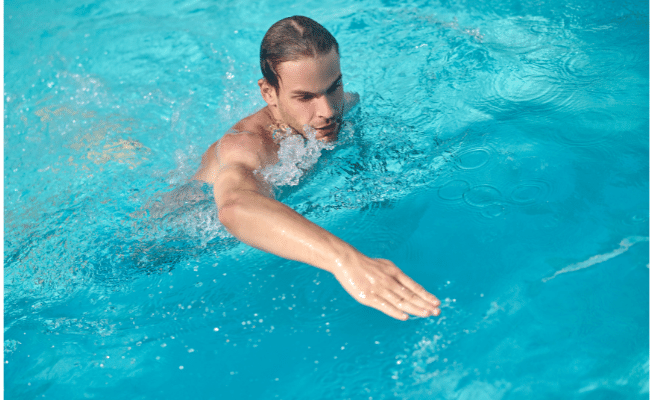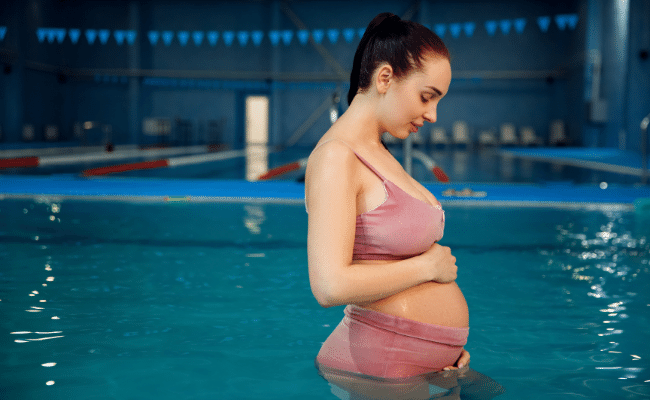
Table of Contents
Can you swim on your period?
swim on your period, Absolutely. Period blood won’t harm the water in any way and it’s even safe to use a tampon while swimming. But don’t forget about your favorite waterproof makeup, either!
This is definitely good news for all those women out there who love to spend their time at the beach or by the pool.
Of course, swimming while on your period isn’t exactly a new revelation: Women have been surfing their periods since before anyone knew what a tampon was (or at least that they existed).
Besides, does Mother Nature really care whether or not we’re comfortable? If she did, cramps would be less painful, and getting our periods wouldn’t cause us to feel bloated and fat.
Can you swim on your period with a pad?
A sanitary pad will not prevent menstrual fluid from coming out while swimming even when you are menstruating.
It is possible that menstrual blood might end up in the pool, depending on your flow and how long you’re swimming for. Women who swim on their period often feel self-conscious about possibly messing up the pool water with blood.
The good news is that many pools actually have systems in place to help reduce this risk. These systems include multiple filters and chemical treatments that can break down menstrual blood. There are also a few things you can do to minimize the risk of bleeding in the water:
– Use tampons instead of pads during menstruation (the string on tampons means they won’t likely be pushed further into the vagina by the movement of the water, thus reducing the risk of leakage).
– Try to keep your menstrual blood from coming out into the pool. Bring a change of clothes and towel in case you leak (in most cases, towels are not allowed on deck, so wrap up in your swimsuit or drape over yourself if possible).
– Change out your tampon/pad frequently – every few hours. This reduces chance that your tampon or pad will overflow and expand as a result.
– If you’re going to be swimming for more than an hour, consider switching to a menstrual cup that can stay inserted during menstruation (the cup doesn’t absorb fluid as pads and tampons do – instead collects it).
The cup should sit low in the vagina, right below the cervix, and should have no trouble with getting pushed upwards by water.
– If you’re planning on swimming for a long time but still want to use pads or tampons, try wearing one that’s oversized (be sure to put an insert inside the pad/tampon!) and change it out every couple of hours.
This reduces the chance of overflow more than just changing regularly and can be done without needing to take off your clothes as frequently.

Can you swim on your period with a tampon?
The answer to that question is yes — if they are inserted correctly before entering the water.
Problem is, many swimmers aren’t properly educated on the use and insertion of tampons. In a nutshell, here’s how to be sure you can safely jump in the pool — or sea or any body of water — with your tampon.
Right Size Tampon for Swimming:
Choose a tampon that has an applicator if possible because this will make it easier to insert. The right size tampon for swimming is one that fills up at least half of the vaginal cavity but does not protrude from your body.
How To Use a Tampon for Swimming?
Wash and dry your hands, remove your tampon from its wrapper and hold it between your thumb and forefinger with the string facing downwards. Sit or stand in a comfortable position and relax all of your muscles — particularly those in your pelvis region.
If possible, lie down on a bed or the floor for this step as it will make it easier to insert the tampon correctly. Insert the applicator of the tampon into your vagina until you can feel it resting against your pubic bone (about an inch) just above where you would expect to find your labia opening.
Can you swim on your period with nothing?
There are a lot of answers to this question, and the most important one is: it depends.
- It depends on your period flow
- it depends on your comfort level with getting into a pool or ocean while menstruating
- it depends on where you’re swimming (e.g., public versus private); and so forth. But let’s start with some basic menstrual information for those new to the topic.
Periods usually last from 3-7 days; they can be light or heavy in terms of how much menstrual fluid is discharged, but often have an average volume of about two tablespoons (30mL), and periods come anywhere from every 21-35 days for any given individual.
In addition, almost everyone experiences PMS (premenstrual syndrome) symptoms some of the time, and many experience PMS symptoms prior to having their period.
As for swimming from a medical standpoint, menstruation is normal; it’s something that almost all women go through whether they like it or not (and yes, there are actually people who try to avoid or prevent their periods).
As long as you’re comfortable swimming while menstruating, there are no medical reasons why you shouldn’t do so with anything covering your lower body.
Can you swim on your period in the ocean?
No, you can’t. You shouldn’t have your period in the ocean or any other body of water for that matter – not because it’s “dirty” but because the blood will attract sharks (big and small), who will mistake it for a food source. Whether or not you are menstruating, there is no reason to go swimming during your cycle anyway as you are most likely to get pregnant on your period – when only a sperm cell has managed to fertilize an egg.
Not only do tampons absorb menstrual fluid and dry up the vagina (which makes sex much more uncomfortable), they also leave behind lint from the cotton making it easier for bacteria to enter the vaginal canal.
Tampon manufacturers recommend changing them every four hours which is actually how long it takes for bacteria to move in and start causing infections. So don’t wear tampons if you don’t want to get pregnant, period!
Can you swim on your period if it’s light?
It’s unlikely, but it is possible to swim on your period if it’s light. Some people have a heavier flow and some people have lighter flows, so what works for one person won’t necessarily work for another.
That being said, swimming on your period really isn’t the best idea because it can irritate the vagina and cause infections or other problems.
It is possible to swim on your period; however, it is not advisable to do so. It could lead to infections or a toxic shock-like syndrome. Also, blood in the water can create an unfavorable environment for fish and plants that live there.

Can you swim on your period with a panty liner?
The short answer is… YES, you can. You can swim in general while swimming on your period with a panty liner. However, please keep in mind that this method is not 100% effective and it does not protect against sexually transmitted diseases (STDs) or Sexually Transmitted Infections (STI’s).
In addition – if you do decide to use a tampon, be sure to change it regularly to prevent Toxic Shock Syndrome.
Toxic Shock Syndrome (TSS) is a rare but very serious condition that affects 1 out of every 100,000 women. Symptoms include high fever, diarrhea, vomiting, and shock.







